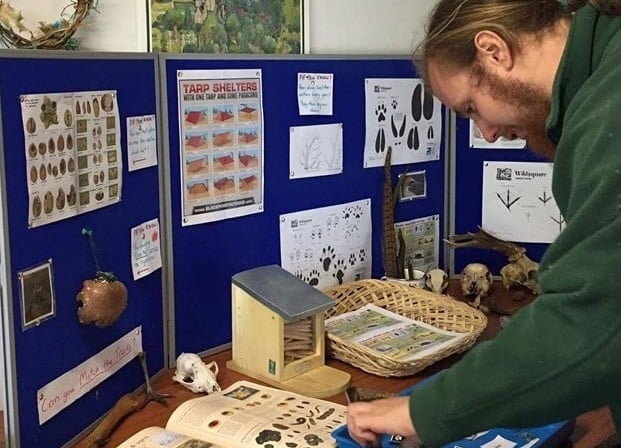Wildlife at Kelburn

West Coast Alpacas are a family run tenant
business on Kelburn Estate.
You can book at their website for Alpaca Treks, Goat Treks and Feed sessions
to meet their beautiful family of alpacas and pygmy goats.
Visit their website for more information
Kelburn is home to an abundance of amazing wildlife, ranging from tiny wrens singing in the ferns to deer quietly nibbling grass in the fields!
Here are a few things you may spot on your visit!


Birds of Prey & Owls
The most common birds of prey you may see at Kelburn are Buzzards (Buteo buteo) and Sparrowhawks (Accipiter nisus).
Buzzards can be seen soaring over the country centre on warm days, and if you’re lucky you may see a Sparrowhawk shooting through the trees in pursuit of a small bird.
Barn Owls (Tyto alba) are much rarer at Kelburn than Tawny Owls (Strix aluco) and tend to only been seen occasionally hunting near the animal fields by the rangers on night checks. Tawny Owls on the other hand can be heard nightly hooting in the woods, listen out for them if you are camping with us!
A Red Kite (Milvus milvus) [pictured] spotted flying over on the 23rd July 2021 by one of the rangers was the first record for Kelburn since 2009!
Red Kites were almost driven to extinction within the UK in the 1900s with only a few pairs left in the Welsh valleys. Thankfully a reintroduction scheme which started in 1989 reintroduced the birds to Scotland and they’re now doing well, especially in the north east and Dumfriesshire.
Robins
Robins are one of the most common birds at Kelburn, keep an eye out for them at all times of the year, especially near The Secret Forest entrance where they’ve been fed by the rangers and some friendly ones may land on your hand!
The rangers have even named some of them such as Bertie, Harold, Tina, and Cricket!


Deer
The largest wild mammal and only deer species found on Kelburn Estate is the Roe Deer (Capreolus capreolus).
Males are called bucks, females does and their young are fawns. Only the bucks grow antlers in Roe Deer.
Antlers are grown and shed every year, they are grown in January to March and are shed or ‘cast’ in November and December.
They can usually be found around the base of trees the deer have been scratching on.
Can you spot the doe and her hidden fawn in the photo?
Amphibians
Did you know the word amphibian comes from Greek meaning ‘both kinds of life’?
Amphibians live both in water and on land.
Kelburn is home to three amphibians:
Frogs, Toads and Palmate Newts!
Can you guess which one is pictured here?
(It’s a frog!)

To learn more about Kelburn’s wildlife why not visit the Natural History of Kelburn section in the Museum on your next visit, or check out our common species list!

